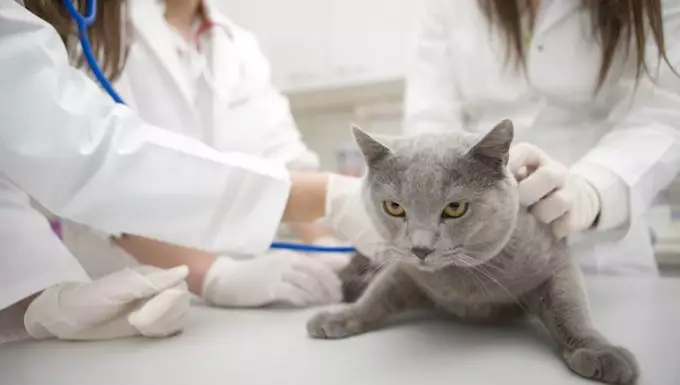Spaying is a common procedure performed on female cats to prevent unwanted breeding and to mitigate certain health risks. However, it may come as a surprise to some cat owners that their spayed felines can still exhibit signs of being in heat. This phenomenon, referred to as ovarian remnant syndrome, occurs when remaining ovarian tissue produces estrogen, leading to estrus-like behaviors. This article delves into the symptoms, underlying causes, diagnostic approaches, and treatment options for this perplexing condition.
Cats showing estrus symptoms after being spayed may display a variety of behaviors that can be alarming to pet owners. Common symptoms include a swollen vulva, excessive vocalization, restlessness, and increased affectionate behaviors such as head rubbing. Cats may also engage in unusual rolling movements, often interpreted as a form of mating behavior. Recognizing these signs early is crucial for timely intervention and treatment, as these symptoms can lead to discomfort and stress for both the cat and the owner.
The primary reason behind ovarian remnant syndrome is typically linked to incomplete surgical removal of both ovaries during the spaying process. Factors such as the presence of abnormal ovarian tissue or issues related to the adrenal glands can also contribute to this condition. Additionally, in rare cases, an excessive number of ovarian structures can develop, further complicating the hormonal balance. Understanding these causes is vital for preventing future occurrences and ensuring the health of the feline companion.
If you suspect that your spayed cat is experiencing estrus symptoms, seeking professional veterinary help is paramount. During a consultation, the veterinarian will conduct a thorough assessment of the cat’s health history, focusing notably on details surrounding the spaying procedure. A comprehensive physical examination will allow the vet to evaluate the cat’s overall well-being, while targeted blood and urine tests can provide insight into hormone levels. An ultrasound may also be utilized to identify any residual ovarian tissue.
The most effective treatment for ovarian remnant syndrome typically involves a surgical procedure to remove any remaining ovarian tissue. This corrective surgery not only alleviates the symptoms but also restores the hormonal balance in the cat’s body. Postoperative care usually includes pain relief medications and antibiotics to facilitate recovery and prevent infection. It is essential for cat owners to adhere strictly to the veterinarian’s instructions regarding medication dosage and duration to ensure the best possible outcome for their furry friends.
Ovarian remnant syndrome is a noteworthy condition that can affect spayed cats, prompting estrus-like behaviors that may confuse and distress owners. Awareness of the symptoms, understanding the causes, and knowing when to seek veterinary advice can significantly enhance the health and happiness of our feline companions. Should you find yourself in this situation, remember that timely intervention can lead to a successful resolution. Have you encountered similar experiences with your cats? How did veterinary care assist in recovery? Sharing insights on this topic can be beneficial to the wider community of cat owners.


Leave a Reply